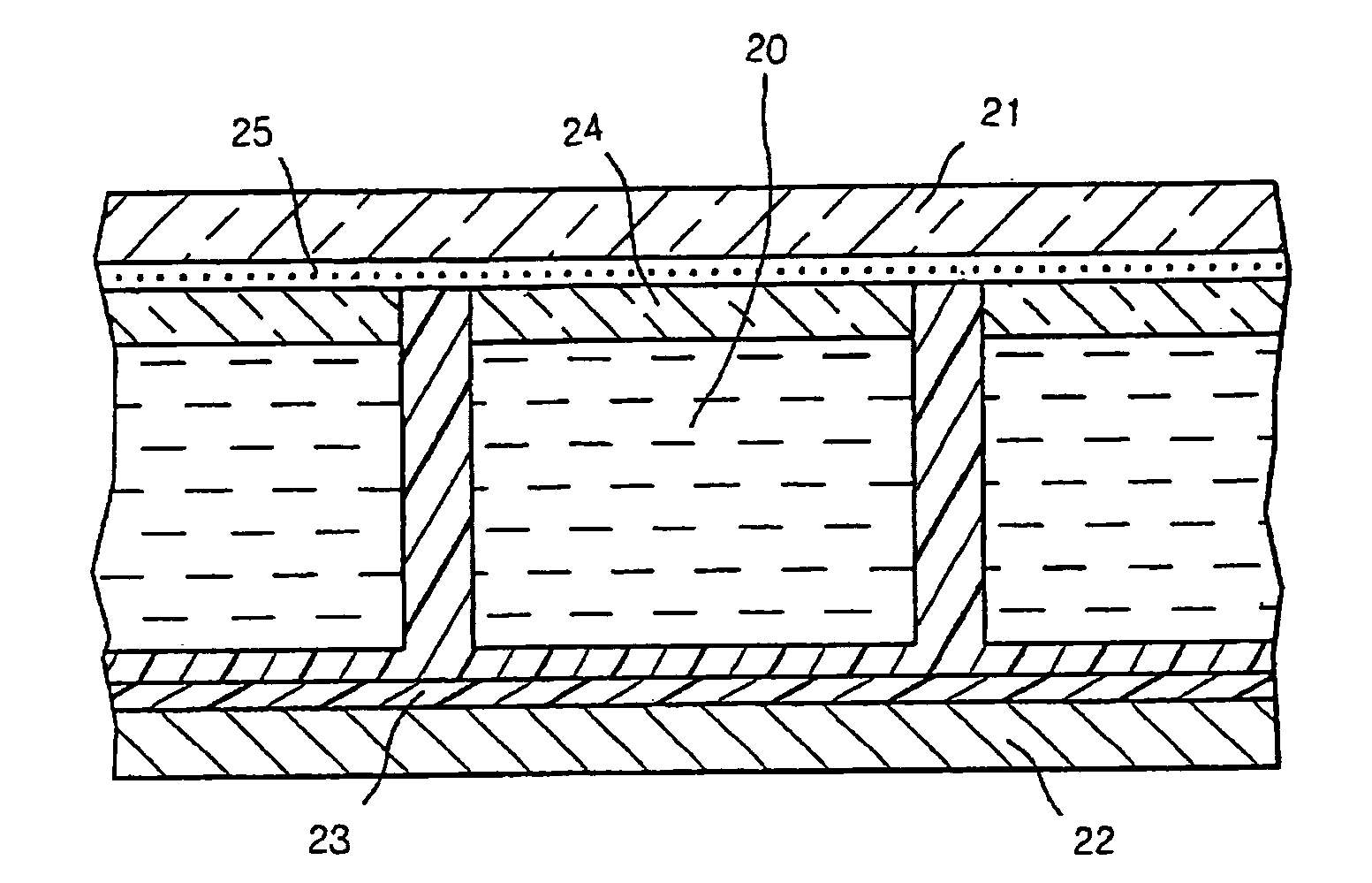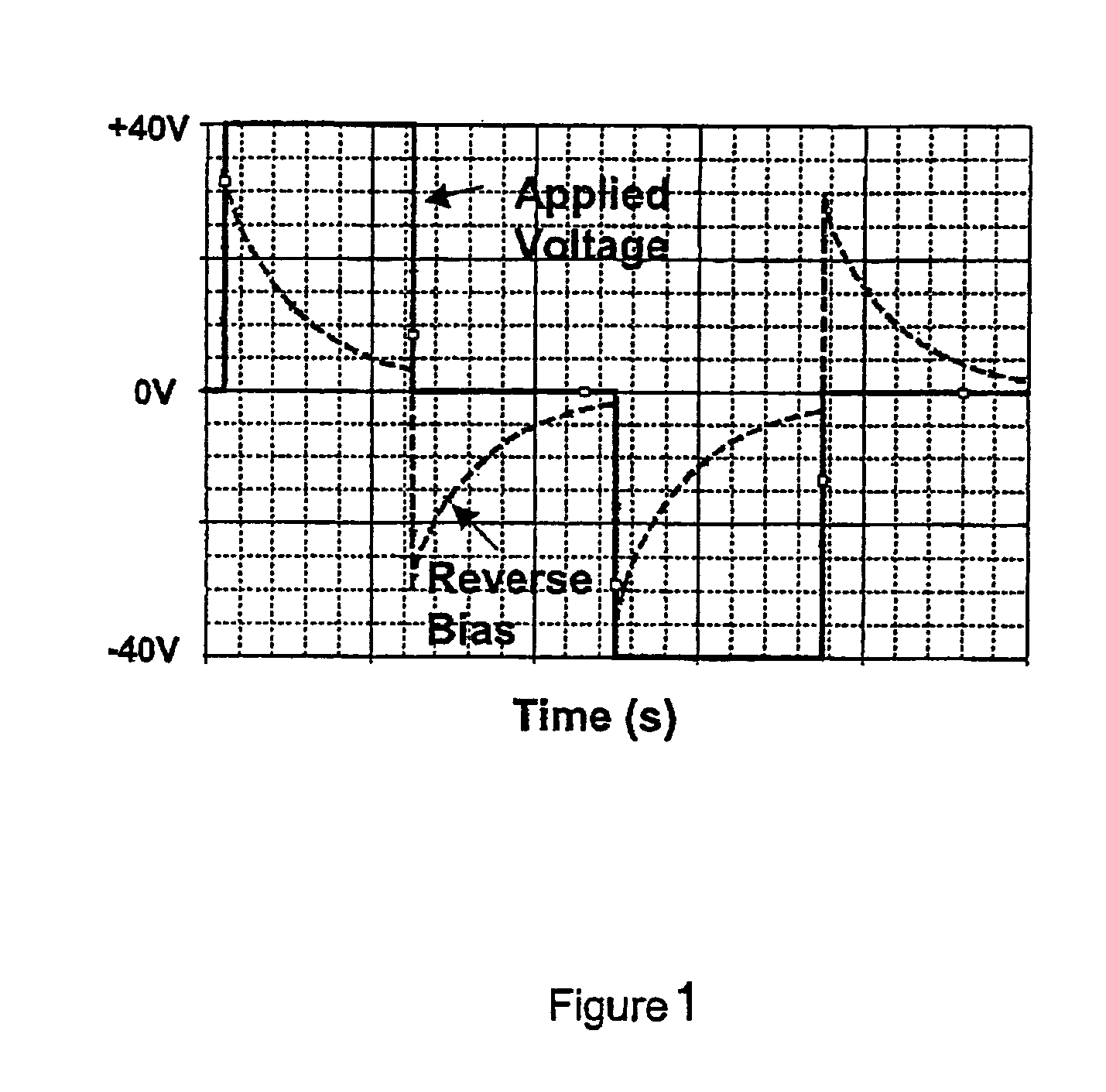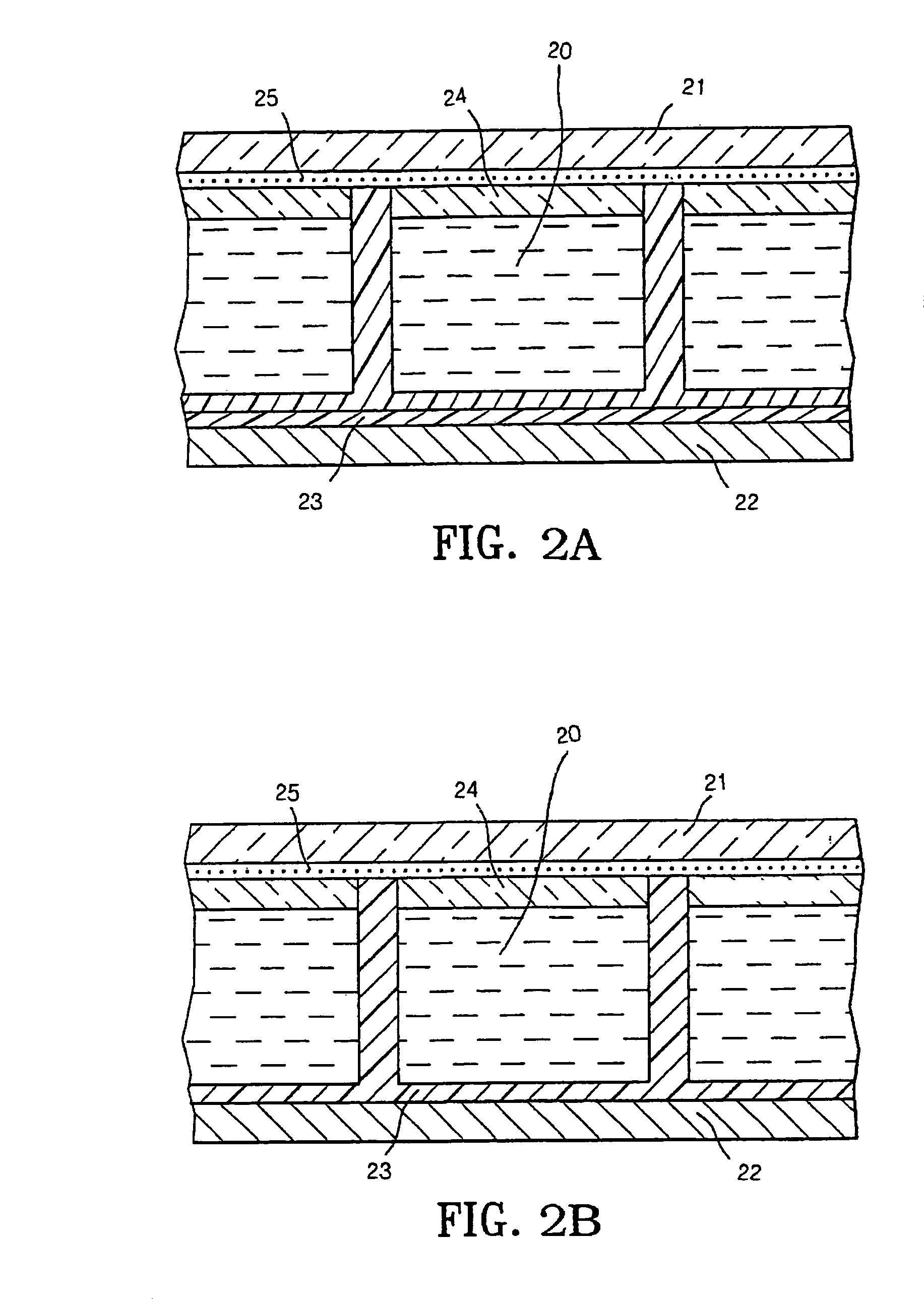Display cell structure and electrode protecting layer compositions
a technology of display cell and composition, applied in static indicating devices, instruments, transportation and packaging, etc., can solve the problems of image bistability degradation, display may have inferior image contrast and bistability, and great difficulties in adopting this approach, so as to ensure reproducibility, consistency and ease of fine tuning, the effect of increasing the effect of voltage applied
- Summary
- Abstract
- Description
- Claims
- Application Information
AI Technical Summary
Benefits of technology
Problems solved by technology
Method used
Image
Examples
examples
[0075]The following examples are given to enable those skilled in the art to more clearly understand and to practice the present invention. They should not be considered as limiting the scope of the invention, but merely as being illustrative and representative thereof.
preparation 1
Synthesis of a Reactive Protective Colloid Rf-amine
[0076]
[0077]17.8 Grams of Krytox® methyl ester (DuPont, MW=about 1780, g=about 10) was dissolved in a solvent mixture containing 12 g of 1,1,2-trichlorotrifluoroethane (Aldrich) and 1.5 g of α,α,α-trifluorotoluene (Aldrich). The resultant solution was added drop by drop into a solution containing 7.3 g of tris(2-aminoethyl)amine (Aldrich) in 2 gm of α,α,α-trifluorotoluene and 30 g of 1,1,2-trichlorotrifluoroethane over 2 hours with stirring at room temperature. The mixture was then stirred for another 8 hours to allow the reaction to complete. The IR spectrum of the crude product clearly indicated the disappearance of C═O vibration for the methyl ester at 1780 cm−1 and the appearance of C═O vibration for the amide product at 1695 cm−1. Solvents were removed by rotary evaporation followed by vacuum stripping at 100° C. for 4-6 hours. The crude product was then dissolved in 50 ml of the PFS2 solvent (perfluoropolyether from Solvay Sol...
preparation 2
Microencapsulation of Pigment in HT200
[0079]8.93 Grams of Desmodur® N3400 aliphatic polyisocyanate (from Bayer AG) was dissolved in 4.75 g of acetone (99.9%, from Burdick & Jackson) and homogenized for 10 seconds with a rotor-stator homogenizer (IKA ULTRA-TURRAX T25, IKA WORKS) at ambient temperature. To the resultant solution, 13.61 g of TiO2 (R706, from DuPont) was added and homogenized for 2 minutes. To the resultant TiO2 dispersion, a solution containing 1.42 g of 1,5-pentanediol (BASF), 0.30 g of triethanolamine (99%, Dow), 2.75 g of polypropylene oxide (MW=725, from Aldrich) and 1.25 g of acetone was added and homogenized for 30 seconds. 0.37 Grams of a 2% dibutyltin dilaurate (Aldrich) solution in acetone was then added and homogenized for 1 minute and 30 seconds. In the final step, 50 g of HT-200 (Solvay Solexis) containing 2.25 g of Rf-amine4900 (prepared according to Preparation 1 above) was added and homogenized for 4 minutes. The resultant microparticle dispersion was th...
PUM
| Property | Measurement | Unit |
|---|---|---|
| resistivity | aaaaa | aaaaa |
| glass transition temperature | aaaaa | aaaaa |
| glass transition temperature | aaaaa | aaaaa |
Abstract
Description
Claims
Application Information
 Login to View More
Login to View More - R&D
- Intellectual Property
- Life Sciences
- Materials
- Tech Scout
- Unparalleled Data Quality
- Higher Quality Content
- 60% Fewer Hallucinations
Browse by: Latest US Patents, China's latest patents, Technical Efficacy Thesaurus, Application Domain, Technology Topic, Popular Technical Reports.
© 2025 PatSnap. All rights reserved.Legal|Privacy policy|Modern Slavery Act Transparency Statement|Sitemap|About US| Contact US: help@patsnap.com



